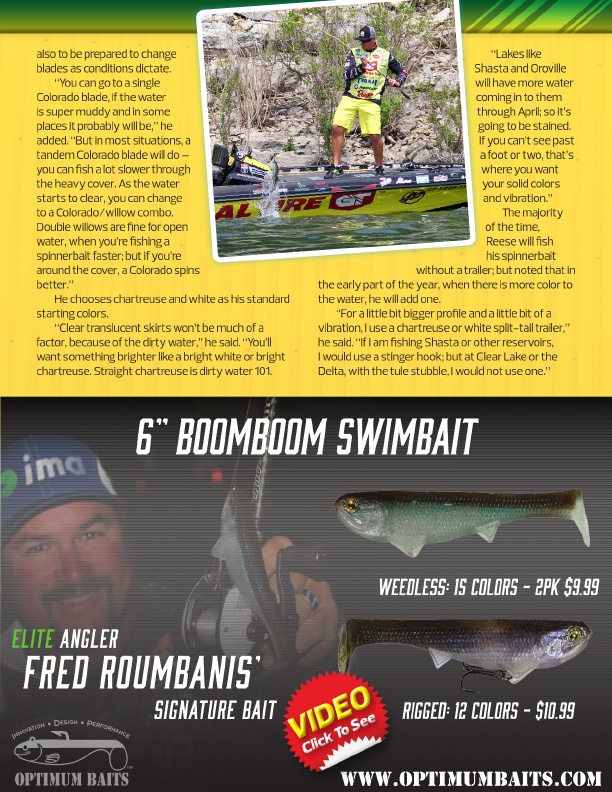
also to be prepared to change blades as conditions dictate.
“You can go to a single Colorado blade, if the water is super muddy and in some places it probably will be,” he added. “But in most situations, a tandem Colorado blade will do – you can fish a lot slower through the heavy cover. As the water starts to clear, you can change to a Colorado/willow combo. Double willows are fine for open water, when you’re fishing a spinnerbait faster; but if you’re around the cover, a Colorado spins better.”
He chooses chartreuse and white as his standard starting colors.
“Clear translucent skirts won’t be much of a factor, because of the dirty water,” he said. “You’ll want something brighter like a bright white or bright chartreuse. Straight chartreuse is dirty water 101.
“Lakes like
Shasta and Oroville
will have more water
coming in to them
through April; so it’s
going to be stained.
If you can’t see past
a foot or two, that’s
where you want
your solid colors
and vibration.”
The majority
of the time,
Reese will fish
his spinnerbait
without a trailer; but noted that in the early part of the year, when there is more color to the water, he will add one.
“For a little bit bigger profile and a little bit of a vibration, I use a chartreuse or white split-tail trailer,” he said. “If I am fishing Shasta or other reservoirs, I would use a stinger hook; but at Clear Lake or the Delta, with the tule stubble, I would not use one.”
42 ®
http://optimumbaits.com/